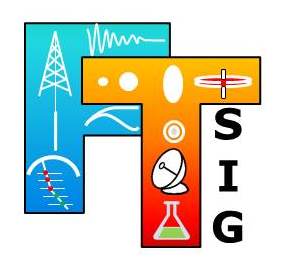The Formation Testing SIG (FTSIG) strives to advance formation pressure and sampling methods and knowledge (est. December 2010)

Contact us at [email protected]
Webinar Series April 18th 8:00-9:00 a.m.
Presentation 1: 08:00 AM
Deep Transient Testing Examples and Interpretation Techniques
Speaker: Adriaan Gisolf
Abstract : Interval Pressure Transient Testing (IPTT) with wireline formation testers has been valuable for reservoir engineers for several decades, by providing early and rapid permeability estimations. With todays ever increasing drive to minimize the time to production, such rapid and early producibility insight is continuously increasing in value. However, with constraints on flowrate, flow volume and build up times, conventional IPTT applicability is limited in zone thickness, permeability and fluid viscosity.
Deep transient testing (DTT) combines high-resolution measurements, higher flow rates, and longer test durations to perform wireline formation tester transient tests in higher permeability, thicker formation, and at greater depth of investigation than with previous formation testers, and at a low carbon footprint. The DTT technique is combined with numerical analysis and real-time integrated workflows. During the drawdown phase, real-time downhole fluid analysis is used to determine the fluid composition, density, viscosity, compressibility, and saturation pressure. These fluid properties are then used to generate and tune an EOS model, which is combined with a geologic model to enable integrated pressure transient history matching. The resulting calibrated numerical model honors the fluid measurements, petrophysics measurements and the geologic model and can be used to predict the permeability profile, zonal producibility, and the volume of influence of the test.
DTT has been run in a wide range of plays and regions, including strong adoption offshore Africa. With availability of released case studies steadily growing, it is now possible to present a range of examples. This presentation aims to highlight data and interpretation for DTT jobs performed in different environments, covering fluids from black oil to gas.
Speaker's Bio: Adriaan Gisolf is a reservoir domain advisor with Slb, based in Bucharest. He started as a wireline field engineer in 2000 and held various field positions in Indonesia, Nigeria, and Colombia. In 2006 he transitioned to reservoir domain champion, first in Angola and later in Norway. He spent 5 years in engineering, working with on Formation Tester development in Houston. More recently he was domain champion in Aberdeen and product champion in Bucharest. He holds a master's degree in mechanical engineering from Delft University of Technology and coauthored 50 publications on wireline formation testing and coinvented 45 allowed US patents.

|
Chairman
|
Steve Smith, Baker Hughes
|
|
Vice-Chair Technology
|
Gibran Hashmi, Halliburton
|
|
Secretary
|
Camilo Gelvez Gonzalez, BP
|
|
Treasurer
|
Scotty Paul , Schlumberger
|
|
Facilitators
|
Margaret Waid, The Waid Group
W. Wade Samec, Halliburton
Carlos Torres-Verdin, The University of Texas at Austin
Mark Proett, Independent Consultant
Wilson Pineda, BP
Tarek Mohamed, The University of Texas at Austin
Irina Baca Espinoza, Weatherford
Juan Carlos Nunez, KAPPA Engineering
|
The SIG plans to host one meeting per year on
various topics pertaining to formation testing.
Some general SIG activities anticipated:
- SIG related meetings, workshops, short courses, and sessions at general/annual meetings
- Maintain contacts with other professional societies that are also concerned with formation testing
- Web-based information exchange, perhaps including posting of papers, experts list, question area
- Provide leadership for technical standardization activities or QA/QC related with pressure measurements or fluid sample acquisition
Click here for the Formation Testing and Sampling LinkedIn Group.